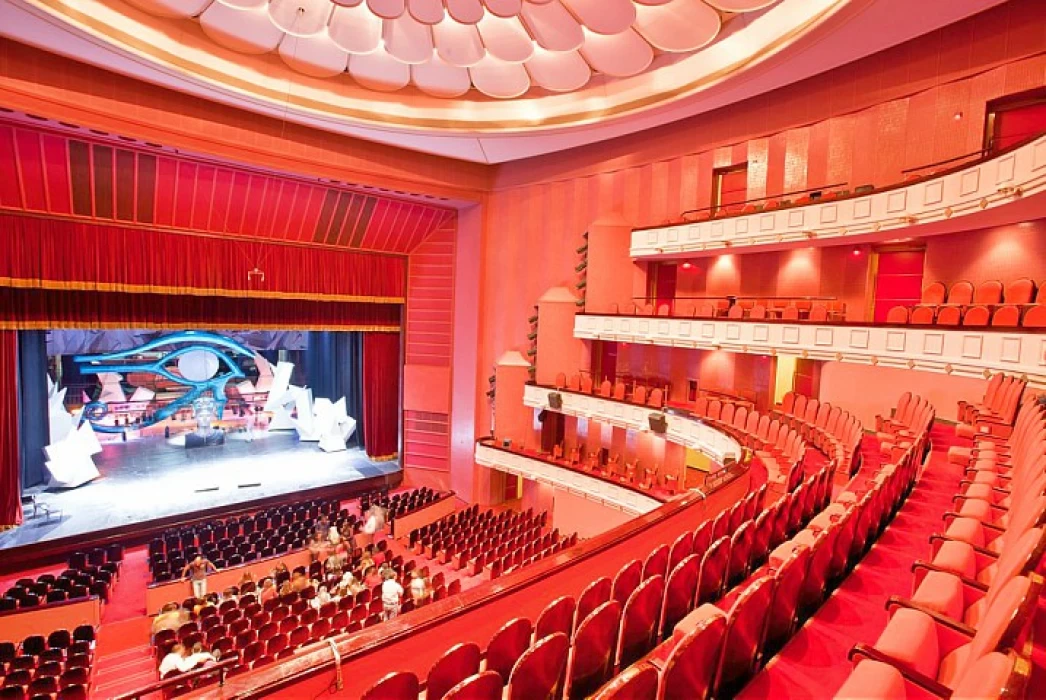
The Egyptian Opera House
Facts About The Egyptian Opera House
Music is the food of the mind, culture is a lighthouse of the mind and the art of opera was not an art far from the tastes of the Orientals and especially the Egyptians, because the ancient history of Egypt is full of musical models accompanying dramatic performance and poetry and on the walls of temples are inscribed, with wonderful recordings, many ancient Egyptian ceremonies and in which the facet of interest in the art of music, singing and dancing appears, to such an extent that they invent many instruments of music in love,There is also the famous harp instrument which has seen various developments up to now reaching the instrument of the eastern lute.
On the banks of the Great Nile and in front of "the Qasr El Nil Bridge", one of the oldest Egyptian monuments, at whose corners is located four famous seven, guardians of an artistic, cultural and human history that touches the roots of Egypt. And it was called the Khedive opera because of its association with the history of making ceremonies for the opening of the Egyptian Suez Canal under the reign of the Khedive Ismail.
It was also established in one of the most important districts of Cairo at that time, where the square opposite was called "Theatre" Square, then Ibrahim Pasha Square and it was named , in September 1954, the Opera Square and it still bears its name to this day. It took six months to build it, at a cost of one million six hundred thousand Egyptian pounds, including that the pound at that time was equivalent to seven and a half grams of gold, that is, the old pound was equivalent to about 7550 pounds of the current currency.
On November 1, 1869, it was inaugurated by the Khedive Ismail and he was accompanied by the empire Eugénie, the wife of the emperor Napoleon III and the emperor François Joseph prince of Austria and inherit the reign of Russia, In addition, the art and politics poles of different parts of the world. The orchestra played the music of "verdi" and the artists gave the show of "Rigoletto", with real jewels out of respect for the important people presented and it contains one of the largest and most luxurious theatres in the world, that is to say, for 850 people .
The French Egyptologist "Mariette pacha" asked the khedive Ismail , on the occasion of the opening of the khedive opera , to choose a story from the pages of the history of ancient Egypt to be the core of the poetic theatre with which the opera opens, the show of the opera legend "Aida" appeared , its text was written by the singer Gillisah Nasoni and its music were put by the Italian musician legend "verdi" who was awarded by the khedive Ismail with 150 franc mile of gold and despite this, circumstances did not allow it to be presented on the opening date and after two years, he was represented at the opening of the opera "Aida" on 24 December 1871.
For nearly a century, the Khedive opera remained an honorable façade for Egypt until the dawn of October 28, 1971, when a fire broke out at the Khedive opera and it fell under the eyes of thousands of Egyptians, The fires consumed the wooden building with its specific architectural style in the centre of the capital, including the clothing, decorations and accessories of the spectales that took place at its theatre and the many rare temples.
After the destruction of the khedive opera with its elegant appearance, distinctive inscriptions, statues and artifacts, Cairo remained without an opera for about two decades, until the current Cairo opera was built on the island, where the Japanese Agency for International Cooperation is coordinating with the Egyptian Ministry of Culture.
It was agreed a design consistent with the buildings that surround the house and the design was characterized by modern Islamic architectural character. On March 31, 1985, President Mohammed Hosny Moubarek laid the foundation stone of the opera on the island’s land and in May of the same year, the Japanese kajima company began construction and implementation of the designs. The construction work was completed on the last day of March 1988, that is to say, after thirty-four months from the start of the work.
The new opera was inaugurated on 10 October 1988, in the presence of the late Egyptian president Hosni Mubarak, Japanese prince Tonohito de Mikaser, the younger brother of the emperor of Japan and King Salman Ben Abdel Aziz, who was then the prince of the city of Riyadh.
Cairo had a great official, cultural and artistic festival that night.
Groups of percussionists and cavalry teams carrying colorful flags were spread from the first bridge Qasr-El Nil at tahrir square to its end, as well as, the police students kept the hall of the statue of Saad Zaghloul that is at the opera and candles and candelabras were lit in the year inside the opera .














